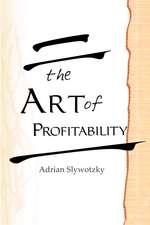Warehouse Management: Automation and Organisation of Warehouse and Order Picking Systems: Intralogistik
Autor Michael Hompel, Thorsten Schmidten Limba Engleză Paperback – 2 noi 2014
Readers can expect a simple and well-documented explantion of WMS based on the open-source initiative myWMS. The software can be operated on a common PC independent of the platform and without any obligatory user login data. Thus, the operation, function and benefits of a WMS can be visualized.
| Toate formatele și edițiile | Preț | Express |
|---|---|---|
| Paperback (1) | 700.61 lei 6-8 săpt. | |
| Springer Berlin, Heidelberg – 2 noi 2014 | 700.61 lei 6-8 săpt. | |
| Hardback (1) | 956.03 lei 6-8 săpt. | |
| Springer Berlin, Heidelberg – 13 oct 2006 | 956.03 lei 6-8 săpt. |
Preț: 700.61 lei
Preț vechi: 824.25 lei
-15% Nou
Puncte Express: 1051
Preț estimativ în valută:
134.12€ • 138.01$ • 113.06£
134.12€ • 138.01$ • 113.06£
Carte tipărită la comandă
Livrare economică 28 februarie-14 martie
Preluare comenzi: 021 569.72.76
Specificații
ISBN-13: 9783642439896
ISBN-10: 3642439896
Pagini: 372
Ilustrații: XII, 356 p.
Dimensiuni: 155 x 235 x 20 mm
Greutate: 0.52 kg
Ediția:2007
Editura: Springer Berlin, Heidelberg
Colecția Springer
Seria Intralogistik
Locul publicării:Berlin, Heidelberg, Germany
ISBN-10: 3642439896
Pagini: 372
Ilustrații: XII, 356 p.
Dimensiuni: 155 x 235 x 20 mm
Greutate: 0.52 kg
Ediția:2007
Editura: Springer Berlin, Heidelberg
Colecția Springer
Seria Intralogistik
Locul publicării:Berlin, Heidelberg, Germany
Public țintă
Professional/practitionerCuprins
Management of Warehouse Systems.- Fundamentals of an Operational Optimization.- Warehousing and Conveying Principles.- Automation of the Material Flow.- Automatic Identification.- Information and Communication Technology.- Realization of Warehouse Management Systems.- Structure of a WMS from the Example of myWMS.
Notă biografică
Prof. Dr. Michael ten Hompel was born in 1958. He studied Electrical Engineering focusing on technical informatics at the RWTH in Aachen and graduated as PhD from the University of Witten/Herdecke. He started his professional career as scientist at the chair of Transportation and Warehousing of the University of Dortmund and at the Fraunhofer-Institute for Transport Technology and Goods Distribution. From 1989 to 1991 he was director of the Dortmund branch of IGS GmbH & Co. KG in Aachen, a company developing computer systems and networks. In 1988 Prof. ten Hompel founded GamBit GmbH, a company developing software for production and logistics management, today one of Germany’s most successful companies in logistics. In 2000 he resigned from the board to become director of the Fraunhofer-Institute for Material Flow and Logistics (since 2005 managing director) where he is also head of the department "Material Flow Systems". He also holds the chair of Transportation and Warehousingat the University of Dortmund.
Dr. Thorsten Schmidt, M.S. holds degrees in mechanical engineering from the University of Dortmund and industrial engineering from the Georgia Institute of Technology. He currently heads the department machinery and systems at the Fraunhofer-Institute for Material Flow and Logistics, focusing on the design and technology of in-house material flow systems.
Dr. Thorsten Schmidt, M.S. holds degrees in mechanical engineering from the University of Dortmund and industrial engineering from the Georgia Institute of Technology. He currently heads the department machinery and systems at the Fraunhofer-Institute for Material Flow and Logistics, focusing on the design and technology of in-house material flow systems.
Textul de pe ultima copertă
Modern warehouse and distribution systems constitute highly complex nodes within the value-added supply chain and have to meet a variety of requirements with regard to time, costs and quality. The efficient operation of such systems is a continuous challenge for anyone in charge. Recent developments of advanced computerbased control technologies provide the necessary control and management systems (Warehouse Management Systems, WMS). Nevertheless, due to the high complexity users often find it hard to handle. The design, choice and operation of a WMS requires an extensive know-how and experience because of the large variety of solutions and system requirements. This book gives an overview of possible solutions and helps to make the right choice. It presents the background, potentials but also risks and strategies. It sets the basis for comparisons for all those readers who are responsible for the evaluation and specification of warehouse management systems. Furthermore,it is meant as basic support for students and interested beginners. This book is based on practical knowledge without neglecting the basic context or implying special technical knowledge. Some basic processes and technologies which are required for a better understanding are described in detail. System-developers find some new ideas when problems and limits of current developments are discussed. New approaches with regard to the structure and design of WMS are presented.
With the book the customer receives a simple and well documented WMS based on the open-source initiative myWMS. The software can be operated on a common PC independent of the platform and without any obligatory user login data. Thus, the operation, function and benefits of a WMS can be visualized.
Caracteristici
The book gives an overview on background, potentials, risks and strategies for efficient warehouse-management in modern production and supply chains. The basic processes and technologies are described in detail. Includes supplementary material: sn.pub/extras















